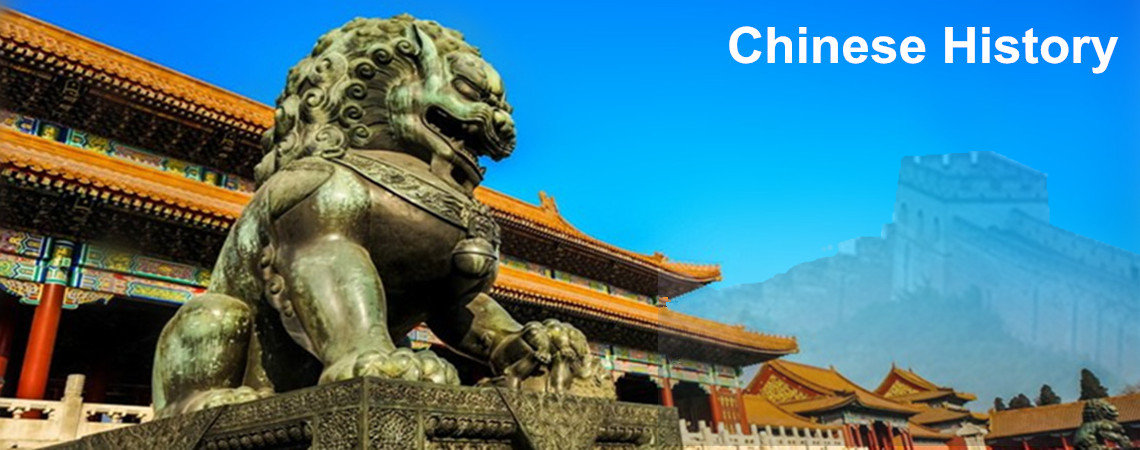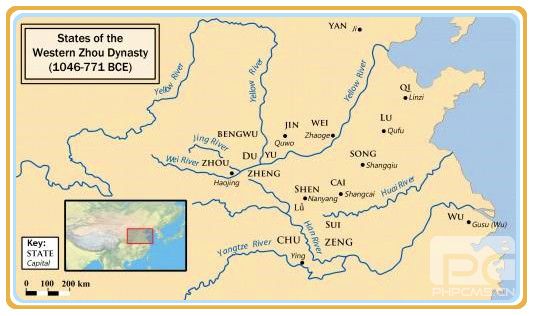
Zhou Dynasty(1027BC-221BC)
Zhou Dynsty was built by a chieftain of a tribe called Zhou. The chieftain overthrew Shang’s last ruler and build the Zhou dynasty. He settled down in Hao, a city near today’s Xi’an city in Shannxi province. Take a Xian Tours to experience the historical site.Zhou dynasty has lasted for a long time from 1027B.C. to 221B.C. The philosophers of Zhou’s period enunciated the doctrine of “mandate of the heaven: and produced the notion that the ruler governed by divine right but his dethronement would prove that he had lost his mandate.
The Zhou Dynasty was the longest dynasty in Chinese history. It lasted for over 800 years and included the reigns of 37 emperors. The Zhou Dynasty is divided into two periods: the Western Zhou Dynasty (11th century BC to 771 BC) and the Eastern Zhou Dynasty (770 BC - 221 BC).
It is so divided because the capital cities in the Western Zhou Dynasty of Fengyi (presently in the southwest of Chang'an County, Shaanxi Province) and Haojing lie to the west of the Eastern Zhou's capital of Luoyi (present Luoyang, Henan Province). As to the Eastern Dynasty, it is divided into the Spring and Autumn Periods (770 BC-476 BC), and the Warring States Period (476 BC - 221 BC). Each of the periods featured turbulent wars.
Facts of Zhou Dynasty
Duration: 1027 B.C.-221B.C.
Capital: Haoji (Western Zhou), Fengyi (Eastern Zhou)
Emperors: Twelve kings for eleven dynasties
Replaced by: Qin Dynasty
Brief Introduction to Zhou Dynasty
Western Zhou Dynasty
 Western Zhou was established after King Wu (1133 BC – 1116 BC) defeated the Shang Dynasty (16th – 11th century BC) and ended during the reign of King You (782 BC – 771 BC), having altogether 12 Kings and over 300 years' of history.
Western Zhou was established after King Wu (1133 BC – 1116 BC) defeated the Shang Dynasty (16th – 11th century BC) and ended during the reign of King You (782 BC – 771 BC), having altogether 12 Kings and over 300 years' of history.
Zhou Dynasty originated from the Zhou clan whose existence stretches back into history. By the 11th Century BC, the Zhou Clan had become increasingly powerful and had extended throughout the present Shaanxi and Gansu Provinces. The Zhou Clan's mightiness increasingly menaced the Shang Dynasty and the conflict between the two groups intensified.
At that time, the Shang Dynasty was under the rule of King Zhou. He was atrocious to his people and doted on his imperial concubine, Daji. All he did caused great rage amongst his people. The chief of the Zhou Tribe, Zhou Wenwang thought it was the right time to attack the Shang Dynasty and entrusted his son Ji Fa to fulfill his last wish.
After Zhou Wenwang died, his son Ji Fa (Zhou Wuwang) succeeded him. He made full preparations for the war and killed King Zhou. Thus the Shang Dynasty ended in 1046 BC. Later, Zhou Wuwang established the Zhou Dynasty and made Haojing (the present Chang'an County, Shaanxi Province) its capital. This is so called the Western Zhou Dynasty.
Eastern Zhou Dynasty
As a part of Zhou Dynasty, the Eastern Zhou Dyansty was after the Western Zhou Dynasty. In Chinese history, the Eastern Zhou Dynasty is divided into two parts; the Spring and Autumn Periods, between the years of 770 BC – 476 BC and subsequently the Warring States Period, between 476 BC – 221 BC.
Spring and Autumn Period
Time: 770 B.C.-256B.C.
Capital:Disunity of the country
Emperors: Five hegemony in Spring and Autumn, Seven Kings in Warring States
Replaced by: Waring States Period
Warring States Period (475–221 BC) was an era of division in ancient China. It was the last of three periods of the Zhou Dynasty era (1046–221 BC): Western Zhou Dynasty, Spring and Autumn Period (771–476 BC), Warring States Period. After the relatively peaceful and philosophical Spring and Autumn Period, various states were at war before the Qin state conquered them all, and China was reunited under the Qin Dynasty.







 Ask Questions ?
Ask Questions ?